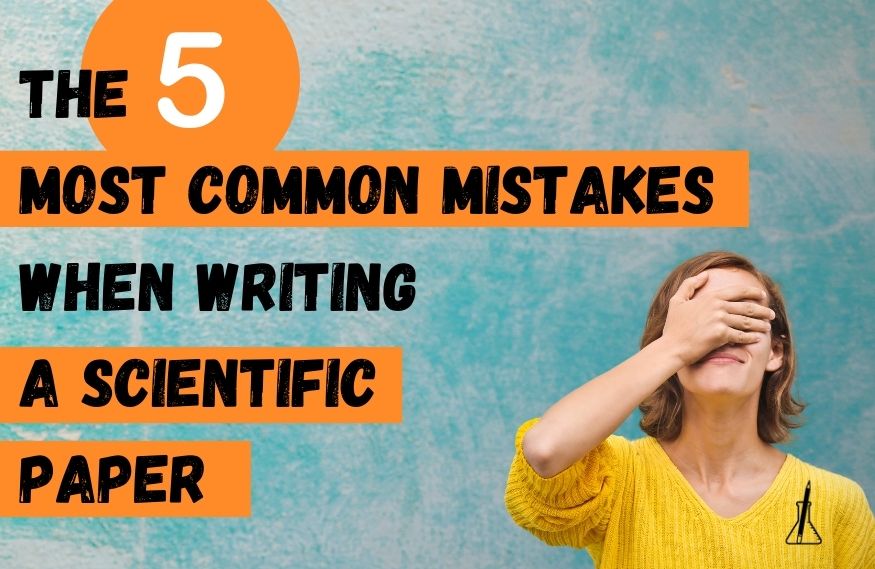Let’s be frank. You don’t necessarily get better in writing the more you do it. You also have to know HOW to do it. And it’s worth learning this because a well-written manuscript has many advantages: It spreads your ideas more easily, it can lead to more citations, and it helps to convince editors to publish it. Here, I summarise the five most common “mistakes” that I encounter when I edit my clients’ manuscripts. Next time you write a paper have these five “do’s and don’ts” in mind:
1) don’t Neglect the element of tension
How often do you read abstracts that start with “In this study, we have investigated…”? Unfortunately, I see this all the time. By jumping straight to the approach and conclusions authors are missing the opportunity to tell their readers a story. And humans love stories. The single most important characteristic is the element of tension, which creates all the magic. The way you do this in a paper is by stating the problem that you overcome with your study. It makes readers excited about what you tell them, curious to know more and emotionally involved.
Do: After you describe what is known in the field, tell the reader what isn’t: Doesn’t the current method work well enough to solve XY, is step YZ of the reaction mechanism still a mystery or is upscaling process XZ uncharted territory? Only after you have stated the problem you are tackling, should you describe how you have solved it. Useful phrases are “despite”, “although”, “however”, “nevertheless”, “but”, “yet” etc.
2) don’t ignore the broader perspective
All too often authors are not specific enough about how their study impacts their field of research. However, in journals with a broad target audience, this is absolutely crucial. The possible implications of your study might be very obvious to you and your co-authors but to people not as deeply involved in your research it is not.
Do: Think about the big picture. Ask yourself: What advantage does my novel method have, can shedding light on the reaction mechanism benefit an application, is the process I investigated ready for industrial implementation…? At the end of your abstract and the end of your discussion or conclusion section, describe what direct and indirect implications and potential your findings have. Don’t be afraid to speculate but make it clear when you do.

3) doN’t be too brief in your discussion
Most of the time authors describe their findings in all detail and give an interpretation of what they mean. But then many of them just stop. Again, this a shame. Your readers don’t want to do the work for you, they want you to walk them through.
Do: As with the implications of your study, take a step back and discuss your results. Do they agree with the literature or don’t they? If not, why not? If you can, extrapolate from your findings. And be open about the limitations of your study. If a reader feels you are honest with them, they are more likely to trust you. Please find some more detailed advice on writing discussion sections in this recent blog post.
4) don’t Be elusive about the purpose
I often see this in the results section: Authors describe their approach and results meticulously but don’t tell the reader why they are doing experiment X or analysis Y. Firstly, this makes it really hard to follow your argumentation. Secondly, the different parts in your results section won’t connect neatly without a statement of purpose. The purpose is one of the essential elements in a story. Once you have given an interpretation for finding A, motivate why you move on to performing experiment or analysis B.
Do: For each result you are presenting, start with explaining why you investigated it. Useful phrases are “in order to” or just “to”. By doing this, you’ll create a narrative in your results part in the twinkling of an eye.
5) don’t Use complicated language
Many people think that good writing means using fancy language. Perhaps some think that complicated sentences make them look smarter. It doesn’t. Convoluted writing signals that you either haven’t understood the topic well enough to communicate it or that you are trying to hide flaws in your argumentation. Instead, well-written papers are easy to read and follow.
Do: Keep it simple. Don’t use synonyms, especially for technical terms. Write with sentences that have a maximum of one subclause. Choose verbs instead of substantives whenever you can. For example, don’t write “The investigation of XY…”, do write: “We investigated XY…”. For more details, have a look at my blog post “Three language hacks for writing scientific papers“.
Was this blog post useful to you? Are you going to try out any of these tips in your next paper? Post a comment below, I’d love to know.


